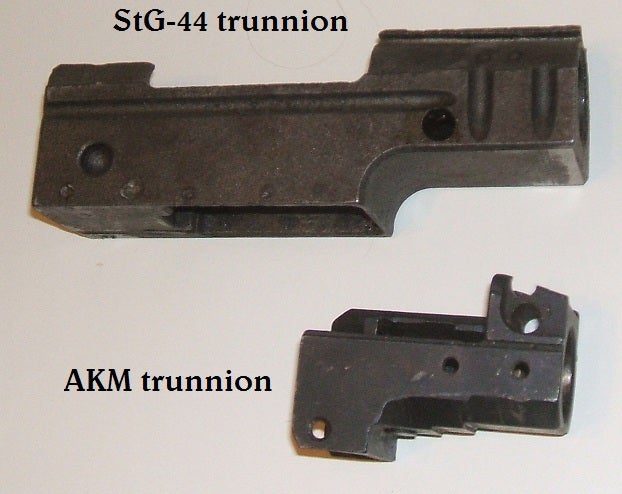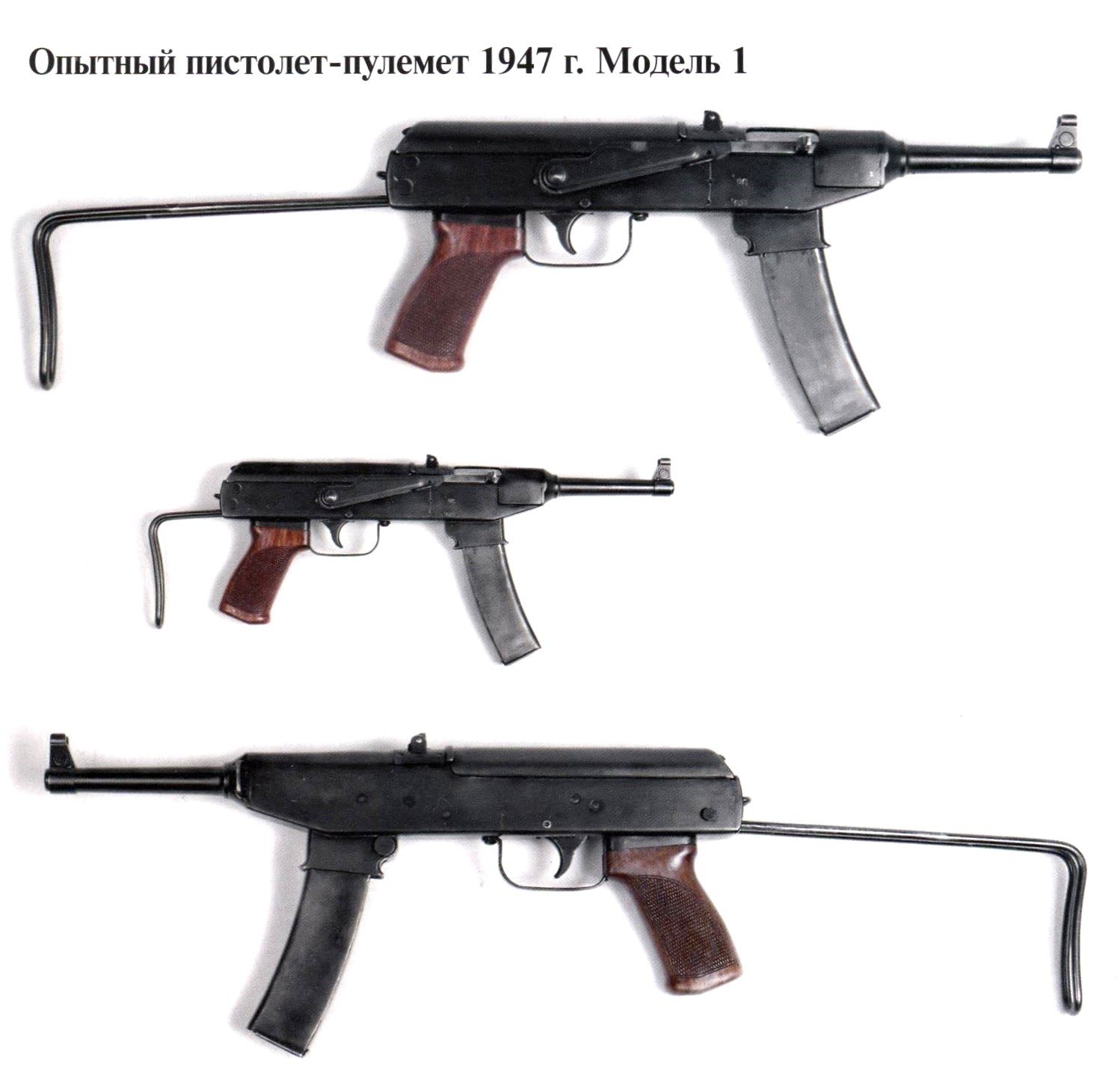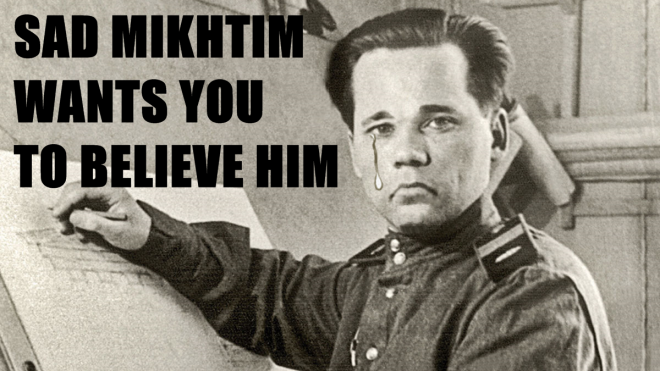Continuing on from where we left off yesterday, in this article we’ll address the arguments that center around the Sturmgewehr’s designer – Hugo Schmeisser – and his career in Izhevsk. Let’s get on with it:
4. The AK-47 looks just like the StG-44! Schmeisser must be the true designer!
I have so far tried to stay away from the more inane arguments that come up in these discussions, but this argument is so ubiquitous, and entertained by so many respected voices, that I feel I need to address it.
I’ll be blunt: This argument is essentially founded in confirmation bias. It’s possible to take any two weapons that are in the same broad category and find numerous similarities between them, and that’s invariably what’s going on with this train of logic. The proponents of this argument take the two rifles side-by-side, and point out their similarities, without also laying out their differences, or considering the influence of other weapons from the period.
As an example of this, in his article AK and StG – Kissing Cousins, Ian McCollum argues that the trunnions of the AK-47 and StG-44 give strong evidence that they are directly related (he calls them “very similar”). However, if we actually examine the trunnions themselves, we find there are virtually no major shared characteristics between them, aside from the fact that they are steel trunnions designed for stamped receivers.

Virtually every major design element of these two tunnions is different, including their locking surfaces, sheet metal attachments, and magazine support. In fact, the front end of the StG-44 trunnion is more similar to the earlier Russian PPSh-41 submachine gun than it is to the AKM! Image source: Ian McCollum, forgottenweapons.com. Used with permission.
My goal in writing the article Rifle Paternity Test: Pinning Down The M1 Garand’s Influence On The AK was to present something similar to these kinds of arguments that honestly and accurately noted not only the similarities and differences between the AK and other rifles, but also to account for the broader context and the possible influence of other contemporary weapons.
In that article (which presents a thorough mechanical comparison between the AK and StG-44, and which should be read in addition to these two articles for the full picture), I conclude:
Is the AK a clone of the MP 43?
Certainly not.
Was the AK inspired by/a response to the MP 43?
It certainly was a response to the German rifle, but Russian engineers would have been aware of the concept previously.
What was the MP 43’s influence on the AK’s design?
Here and there, there are details that may be indicative of some design DNA transfer, but mechanically speaking the MP 43 can claim only marginal influence.
5. Hugo Schmeisser worked at Izhevsk, and was the true designer of the AK-47
In June of 1945, the occupied city of Suhl, where StG-44 manufacturer Haenel was based, changed hands from the Western Allies to the Soviet Union. The USSR seized the factory and the technical documents pertaining to the StG-44, and even reportedly constructed 50 examples of their own from pre-existing parts. As well, they captured Hugo Schmeisser himself, and transported him to Izhevsk to assist in small arms projects there.
For many, this is damning evidence that the AK-47 must have been derived from the sturmgewehr, or even designed secretly by Schmeisser himself! However, the facts as we know them don’t line up well with this theory. Izhevsk, although it was a site of AK-47 and AKM production, was not where the weapon was actually designed – that was the Degtyarov Plant in Kovrov, almost 1,000 km away. Therefore, Schmeisser’s presence in Izhevsk during the late 1940s is actually a very strong piece of evidence that he didn’t have anything to do with the AK-47, contrary to what many believe.
We must also remember that Hugo Schmeisser was getting fairly old by this time, and probably was in no mood to assist the Russians in developing a new weapon. Russia was just just a year or two prior the mortal enemy of Germany, and Schmeisser – well into his 60s by this time – surely was not thrilled about working for them. Indeed, it seems the Soviets realized this, as they reportedly set him to working on manufacturing, rather than design. Even at that, Schmeisser seems to have been largely uncooperative, from what little evidence we do have.
Ultimately, Schmeisser’s career in Izhevsk will still be shrouded in mystery until pertinent documents are requested for declassification (and approved), but he simply wasn’t in the right place at the right time to have helped with the AK-47’s design, much less been responsible for it. This should come as no surprise, either, as the AK-47 doesn’t really seem like a Schmeisser design, having very few particular elements and flairs in common with his previous projects.
Therefore, in the absence of any real evidence, and the presence of significant evidence to the contrary, we can only conclude the allegations that Hugo Schmeisser is the true designer of the AK-47 are simply untrue.
6. If Mikhail Kalashnikov was such a talented designer, why didn’t he ever design anything besides the AK?
This is a very petty argument, but it does come up a lot. A major problem with this argument is that you can apply it to many other small arms designers just as well as you can Kalashnikov. For example:
- If John Garand was such a talented designer, why didn’t he ever design anything besides the M1?
- If James Paris Lee was such a talented designer, why didn’t he ever design anything besides the Lee-Enfield?
- If Georg Luger was such a talented designer, why didn’t he ever design anything besides the Luger?
- If Eugene Stoner was such a talented designer, why didn’t he ever design anything besides the AR-10?
- If Dr. Richard Gatling was such a talented designer, why didn’t he ever design anything besides the Gatling Gun?
- If Hiram Maxim was such a talented designer, why didn’t he ever design anything besides the Maxim Gun?
Et cetera. Many of you may be thinking “but those people did design other guns!” and that’s correct, but Mikhail Kalashnikov did, too. He invented numerous machine guns, selfloading and automatic rifles, submachine guns, and other weapons that remained prototypes and were never adopted. Only the AK, and its belt-fed derivative, the PK, were ever adopted. Yet, that’s very normal for many small arms designers, as the examples above illustrate.
In fact, the AK-47 wasn’t even the first, second, or third weapon Kalashnikov invented. By the time of its adoption, he was a truly accomplished and talented designer, who commanded great respect from his peers.

This was Kalashnikov’s next project after the AK-47, a 7.62x25mm submachine gun. Few Westerners have ever heard of Kalashnikov’s other work, but that doesn’t mean he was indolent! Image source: Maxim Popenker, used with permission
In a later article, we’ll take a closer look at Kalashnikov’s weapons portfolio (including addressing the claim that the pre-AK-47 prototypes showed more StG-44 influence, also partially covered in Rifle Paternity Test), so stay tuned for that.
7. The Russians won’t declassify all the documents pertaining to the AK’s development, because they don’t want to reveal that Schmeisser was the real designer.
This argument seems to have arisen from confusion regarding the differences in declassification processes in the United States and in the USSR/Russian Federation. In the US, classified documents are declassified automatically after 25 years unless special exceptions are made. Many of the original documents pertaining to the AK-47’s development remain classified even after 70 years, and this has made many people conclude that they must reveal something damning or shocking, or else they would already have been declassified, surely.
However, Russian declassification procedures are different than those in the United States. Most importantly, there is essentially no provision for automatic declassification of most documents, and therefore documents typically only get declassified upon request. In other words, unlike how all US classified documents get automatically declassified after 25 years, in order for a Russian classified document to be declassified, its declassification must be requested by an interested party, and that request reviewed by a declassification board.
Therefore, the fact that documents pertaining to the AK-47’s development haven’t been declassified yet doesn’t necessarily indicate that the Russian government has something to hide, it may just mean that those documents haven’t been requested yet. Given that interest in Soviet archives is mostly restricted to a handful Russian historians and enthusiasts (for whom the AK-47’s development is not very controversial, as it is here in the US), it seems perfectly plausible that these documents have remained classified due to a lack of particular interest.
Conclusion, and what does it mean to “design a rifle”?
There are many more arguments I could address, but that’s all that’s worth addressing for now. One final subject I wanted to touch on addresses what it means to be a weapon’s “designer”, and how Kalashnikov fits in to this definition. While it’s true that some weapons designers in the past did work alone, in the modern era the normal arrangement for professional design firms is for there to be a team of engineers, draftsmen, and craftsmen, headed by a director or chief engineer. It’s this spot at the top that Kalashnikov occupied in the development of the AK-47. While others were responsible for drafting the drawings and specifications, manufacturing the prototypes, and even offering engineering advice, Kalashnikov was the captain of the ship, so to speak, and has therefore received nominal credit for the design. This arrangement is far from unusual – it is actually typical – and in fact Eugene Stoner headed a similar kind of design team that created the Armalite AR-10, for which he is credited.
Necessarily, this kind of arrangement implies that not every element of the AK-47 was Kalashnikov’s doing, and we certainly shouldn’t assume that the rifle sprung forth fully formed as his brainchild. It was, instead, a team effort that took several years to perfect – and let’s not forget either that some of the hardest work was done after Kalashnikov’s team moved on, during the production engineering phase. Still Kalashnikov gets the credit, and that’s his right by tradition. We should neither forget the efforts of the other people on Kalashnikov’s team, nor should we confuse their presence for evidence of some deep Soviet conspiracy to obscure the truth.
 Your Privacy Choices
Your Privacy Choices
